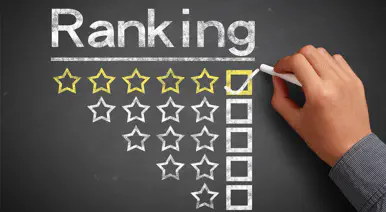Surveys from Stakeholders Make Good Business Sense
Businesses around the world have discovered that engaging stakeholders is a competitive advantage and an integral part of business strategy. It takes multiple stakeholders to support the operation of any one business. Businesses have also discovered that all it takes for this engagement to take place is an effective employee survey designed to uncover the values of stakeholders and companies as a whole.
Stakeholders come in many shapes and forms. Traditionally, the three most commonly identified stakeholders have been employees, customers, and shareholders, those individuals with a financial investment or ‘stake’ in the company.
Basically, a stakeholder is anyone with an interest in what a given business does. One of the first references to stakeholders was found in an internal memo at the Stanford Research Institute in 1963, which defined stakeholders as “those groups without whose support the organization would cease to exist.”
Researchers at the Tavistock Institute in London, England made stakeholders a part of their work on systems analysis in organizations in the 1960s and 1970s. Since that time, references to stakeholders have only grown.
Current practice identifies stakeholders as employees or internal customers, external customers, creditors, suppliers, unions, the government, regulatory agencies, nongovernmental organizations, special interest groups, industry trade groups, contractors, professional associations, local communities, schools, analysts, the media, activists, research centers, advocacy groups, strategic partners, and competitors, to name but a few.
Each stakeholder group has different needs, expectations, priorities and ‘stakes’ in the business. With the exception of employees, stakeholders are generally people not involved in doing the work, but people who have some vested interest in the organization.
Primary or market stakeholders are internal stakeholders who are involved in economic transactions with the business; this includes stockholders, customers, suppliers, creditors, and employees.
Secondary or non-market stakeholders are external entities who are not involved in economic transactions, but who are affected by or themselves impact business actions. This includes activist groups, the media, the general public, and communities – local to international.
While many stakeholder groups share common interests and expectations with regard to the company, it is important to remember that stakeholders often have conflicting or competing interests. When telecommunications companies install infrastructure to provide broadband service to the community, some stakeholders welcome the new service while others grumble at all the disruption as cables are laid.
Consider the company that sponsors a mentoring program at after-school centers for at-risk youth. Although a worthy cause, some shareholders might object to the program since it directs resources away from the financial bottom line. Other shareholders might contend that the program more than makes up for that fact by the goodwill that results from developing the character of at-risk youth.
So, how do organizations know whether stakeholders share common or conflicting interests? How do organizations communicate with their stakeholders?
Cadbury Schweppes, one of the United Kingdom’s best known companies, is an international confectionery and beverages company. It develops innovative products and tweaks existing ones. Cadbury Schweppes also takes time to listen to its stakeholders and to balance their interests with those of the company.
Cadbury Schweppes has ongoing discussions with its stakeholders, using different methods to communicate with each stakeholder group. Many shareholders attend the annual meeting where they ask questions and vote on issues. The company deals with consumer questions and issues on a daily basis via social media although it uses surveys and market research to more formally identify consumer opinions and needs. Company employees provide some of their feedback to the company on questionnaires.
Retailer Build-A-Bear Workshop sends out weekly surveys to members of its database of six million customers, asking them to rate their recent store experience, including the cleanliness of bathrooms.
“The company’s success has grown to over 100 stores in five years doing over $200 million in revenue due to its intense focus on gathering customer feedback,” notes company founder Maxine Clark.
Michelin, the world’s number one tire manufacturer, employs over 100,000 people across all continents. In addition to its employees and customers who are both businesses and individuals, Michelin’s stakeholders include governments local to Michelin sites, financial institutions, and various special interest groups, like Friends of the Earth. Michelin also offers services and disseminates stakeholder feedback throughout its supply chains, helping distributors and other partners add value to their work.
Michelin also implements surveys with employees, conducting needs assessments to identify training and professional development necessary to support career paths of each staff member. Surveys are also used to gather information from customers and suppliers.
The Body Shop, opened in 1976 by Anita Roddick in Brighton, England, has over 2,600 stores in 66 countries selling over 400 products. In addition to its toiletries and cosmetics, the organization is known for its commitment to such issues as human rights, animal and environmental protection.
To assess its own business performance, the Body Shop worked closely with a think tank in the United Kingdom, to design an audit methodology. The audit collects data from diverse stakeholder groups each year through use of focus groups, questionnaires, and in person interviews. Results are published in an annual Values Report.
The Body Shop assesses each of their direct suppliers against the company’s Code of Conduct and criteria established by the Ethical Trading Initiative, an alliance of companies, trades unions, and voluntary organizations. The Code addresses issues like child labor, discrimination, working conditions, and wages.
The process begins with a self-assessment questionnaire, followed by independent audits and site visits to determine whether suppliers have truly aligned their practices to company expectations. Sources at The Body Shop state that “ours isn’t just a value chain, it’s a values chain.”
In the audit and subsequent Values Report, The Body Shop focuses on questions and analyzes feedback in the areas of research and development, sourcing and production, distribution and packaging, stores, staff and franchising, as well as customers and end users.
From its stakeholders in research and development, survey items pertain to finding the right formulations, ingredients, and processes that result in products that make a difference to end users and the world-at-large.
“Recently, we rejected 15 materials due to noncompliance with our Against Animal Testing policies. On several occasions we’ve had to delist a particular material, which means we’ve either had to look for another supplier or consider reformulating the original product,” explains stakeholder Jane Firth, a Technical Compliance Advisor for The Body Shop.
From its stakeholders in sourcing and production, audit survey items pertain to sustainability, respect, equitable and fair treatment of people around the world. The company strives to use materials and resources from small, local communities around the world, especially from developing countries. The Body Shop works with suppliers to help improve conditions for their workers.
The Body Shop prides itself on paying fair wages and helping to develop the infrastructure of the local community so that residents there can plan for and sustain their own economic growth in the long term. Feedback on the stakeholder audit explores the relationship between suppliers and The Body Shop as well as the varied benefits to the local community from those relationships (e.g. clean water, access to healthcare and education). Personal stories from artisans, farmers, and producer groups in over 20 countries highlight initiatives resulting from their stakeholder relationship with The Body Shop.
From the stakeholders in distribution and packaging comes feedback to inform progress in reducing the company’s carbon footprint via the new hub-based distribution system. How is it working? What changes are needed? Are the distribution and packaging processes effective in minimizing waste, reducing packaging, and cutting emissions of carbon dioxide?
“With my team, we identified a way of using slip sheets rather than pallets for international distribution. Slip sheets are much lighter and thinner than pallets, which means you can ship more product in the same containers,” explains stakeholder Simon Pattenden, involved in distribution and packaging for The Body Shop. “Innovations in this area have reduced shipments by 55 sea containers a year, which adds up to a savings of 65 tons of carbon dioxide.”
The Body Shop considers its stores the face of the company and its staff and franchise owners the voice of the brand. Feedback from this stakeholder group includes feedback on ethical practices, ways in which company values are incorporated into business operations, benchmarking responsible business practices in regions around the world, and financial viability of each business.
Stakeholder feedback is also gathered from employees and community members to assess the impact of employees who use as many as six paid volunteering days each year to ‘give back’ to their local communities. Stakeholder feedback reveals that employees participate in such activities as visiting patients in hospice, creating a garden for a homeless shelter, and developing a website for a charity working with local people who are homeless.
Stakeholder feedback is also gathered from The Body Shop customers to identify likes, dislikes, needs, and desires, valuable market research that contributes directly into innovation of new products and services.
The Values Report notes that “true value of the auditing process can only be measured by what follows, so feedback processes and future action plans are critically important. The overriding objective of a stakeholder audit must be to make The Body Shop more efficient, more accountable, and more effective.”
As with any survey done by any organization, something must be done with the gathered feedback for the organization to remain credible with all stakeholders. The organization must commit resources to act on feedback received. What generally makes this a logical choice is that the benefits from gathering stakeholder feedback far outweigh any costs involved.
In their article on the use of survey research to gather multiple stakeholder feedback to evaluate organizational performance, Brooks, Milne, and Johansson note that the process yields answers to a myriad of questions, including the following:
- How successful has the organization been compared to its stated objectives?
- Are stakeholder needs and expectations being met by the organization’s products and/or services?
- Do the work environment, systems, and processes meet the needs of all stakeholders? If not, what must change?
- Do stakeholders believe the organization’s claims about current and projected organizational performance?
- Do stakeholders believe that organizational performance can be sustainable?
- Given their relationship to the organization, its products and services, what suggestions for improvement do stakeholders have?
- What new information do stakeholders bring to the table? How can the organization use that to its advantage?
- How can stakeholders connect those in the organization to new resources?
If key stakeholders, like the Board of Directors or Trustees, decide to tie stakeholder research to the evaluation of organizational performance, then key indicators of organizational performance must be defined along with sources of information, data collection points, and methods to be used. Evaluation questions need to be developed and measurable outcomes defined and measured.
Using surveys to gather stakeholder feedback makes good business sense. Surveys can evoke stakeholder respect for the organization and increase organizational credibility. Survey results can lead to revised policies, procedures, and systems within the value chain of suppliers; survey results can also lead to more effective services and products that better meet consumer needs.
Through survey research, sources of conflict and resistance can be identified; follow up focus groups can work towards solutions. Stakeholder feedback can identify new markets and enhance existing ones.
Stakeholder feedback can drive development of products and services, marketing strategy, and expectations for service and organizational change.
NBRI can help you gather information from each of your stakeholders to inform all aspects of your business. Contact us now at 800-756-6168.
Terrie Nolinske, Ph.D.
Research Associate
National Business Research Institute




























 By submitting this form you agree to our
By submitting this form you agree to our